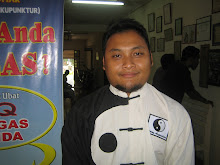
What is spondylosis?
Spondylosis is a wearing down or degeneration of the spine caused by wear and tear on the joints. Deterioration most frequently involves the cartilage and bones in either the cervical spine (joints of the neck), sometimes referred to as cervical spondylosis, or the lumbar spine, sometimes referred to as lumbar degenerative disc disease. Spondylosis can also affect the middle section of the spine, called the thoracic spine.
Degeneration of the spine is most commonly caused by normal wear and tear, which is why it is far more common for people over age 60 to have symptoms of spondylosis. However, degeneration can begin as early as age 30, and there are many cases of lumbar symptoms appearing by age 40. This degeneration can be associated with several other phenomena, such as spinal stenosis (abnormal narrowing of the spinal canal), osteoarthritis of the spinal joints, or degenerative disc disease, in which the disc dries out (becomes dehydrated) and loses functionality.
Spondylosis cannot be cured, but pain management and physical therapy, and in some cases surgery, can improve your mobility and comfort.
Spondylosis is not life threatening, but in some cases it can lead to nerve damage that can be debilitating. Seek immediate medical care (call 911) for serious symptoms of nerve compression, such as loss of sensation in the limbs or shoulders, a complete loss of balance, or loss of bladder or bowel control. Also seek immediate care for serious symptoms, such as abnormal sensations or sudden weakness or numbness on one side of the body, paralysis, and changes in level of consciousness.
Seek prompt medical care if you are being treated for spondylosis but mild symptoms recur or are persistent.
Common symptoms of spondylosis
You may experience spondylosis symptoms daily or just once in a while. At times any of these symptoms can be severe:
Back or neck pain that may or may not radiate to the limbs
Headache (especially with cervical spondylosis)
Herniated disc
Muscle spasms
Neck pain and stiffness (in cervical spondylosis)
Nerve problems that cause pain, numbness or tingling in the arms, shoulders or legs ,Sciatica
Symptoms that might indicate a serious condition
In some cases, spondylosis can be a serious condition that should be immediately evaluated in an emergency setting. Its symptoms may also mimic those of stroke or other serious conditions. Seek immediate medical care if you, or someone you are with, have any of these serious symptoms of nerve compression including:
Abnormal sensations, numbness, or weakness on one side of the body
Impaired balance and coordination
Loss of bladder or bowel control
Loss of sensation in the arms, shoulders or legs
Muscle weakness in the arms or legs
Bahasa Melayu:
Sakit urat saraf, sakit tulang, lenguh tengkok, leher rasa berat, kebas-kebas kaki, tangan, sebahagian anggota badan, sakit kepala, sakit bila bergerak, sakit bagun pagi, sakit dibahagian pinggang dan lain-lain kesakitan.
Awas, mungkin anda salah seorang calon untuk penyakit spondylosis.
Jika masalah ini tidak serius, rawatan akupunktur amat bagus untuk dicuba dan makan ubat homeopati dari dalam. InsyaAllah masalah anda akan dapat diselesaikan tanpa pembedahan.





No comments:
Post a Comment